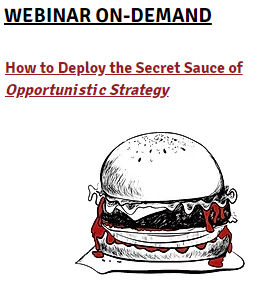There was an anesthesia billing service in the 1980’s that marketed by telling its clients that all they had to do was go to the hospital, do their cases, fill in the billing information, go home, and get paid. In fact, if you asked physicians today what they would like in terms of a healthcare system, chances are that a great percentage would say that that system is what they want.
Sure, it’s human nature to head toward pleasure and avoid pain, but it’s quite another thing to ignore reality in favor of illusion.
The fact is that the current healthcare marketplace is very different from that of the 1980’s. In fact, even in the 1980’s, that billing service’s marketing manifesto was completely ludicrous.
I’ve written before about the process that I call Focus on The Future™. The process involves creating your group’s ideal future and then using that future as a magnet to pull your group toward that desired end result. But equally important to understand, the process begins with telling the truth about your group’s current condition in all regards, from relationships within and without the group, from all of its assets to all of its liabilities.
That specific “truth” of your group, combined with the truth of its specific external situation — from the financial condition and aspirations of the hospitals at which you practice, to the demographic trends of the community, to the impact on your group of the national healthcare debate — all combine to create your group’s current situation, which, in terms of your group’s transformation, serves as raw material.
So, as opposed to an idealized return to the past (á la the 1980’s billing service manifesto – which was undoubtedly even then an idealized present), focusing on the future and its required telling of the truth necessitates acceptance:
Acceptance of the group’s current situation. Acceptance of the group’s pluses and minuses. Acceptance of market realities. Acceptance of the fact that “it is what it is” — acceptance of reality.
This first step is absolutely required. Not only does it dispense with the self-delusion that acts as an anchor, holding back against forward movement, it provides the current “location” of your group; you must know where you are in order to understand how to move the group from where it is to its desired new reality.
If this isn’t clear, there’s another way of describing the point that might strike true for you:
Your group’s current situation including all of its attributes, plus the total of the outside factors impacting your practice, combine to form a sort of wave, perhaps even a tidal wave. You can push against it as hard as you possibly can, but that tide will always win in the long run and, if that’s your strategy, you will always lose.
So, as opposed to ignoring reality, or arguing against it, or, even worse, idealizing it, once you’ve identified that wave, you can set a strategy that attempts to skirt it, or, even better yet, ride it.
No one can deny that the trends impacting medical practice induce fear. But there’s also tremendous opportunity within, and as a result of, those trends, and that opportunity is available for those who understand the need to not simply be buffeted, but to navigate.
In conclusion, groups often hold themselves back by having no strategy – no overriding strategy and no specific business strategy. To succeed, groups must strategize for their own desired future and that involves telling the truth about the current state of affairs. Anything less is delusion and that will lead to disaster.
It is what it is. It will be what it will be. Always.




